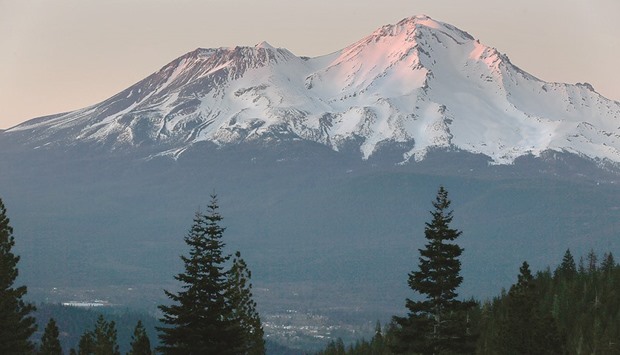When it comes to ancient human migration, it’s all in the timing. Scientists studying a corridor that could have allowed ancient American settlers to pass the glaciers separating Alaska from the rest of the continent might not have been viable at the right time window to allow some of the earliest human migrations through.
The findings, published in the journal Nature, offer an unprecedented profile of one possible migration route while deepening the mystery around how some of the first people actually made it south into America.
Scientists have long thought that humans passed from what is now Siberia to present-day Alaska via the Bering land bridge (a strip of land that today is covered in ocean) but then had to wait for the ice sheets across present-day Canada to recede before continuing southward. Then, about 15,000 to 14,000 years ago, two retreating glaciers (the Laurentide and Cordilleran ice sheets) opened up a corridor to the rest of the continent.
At first, it seems like that corridor’s appearance might mesh well with the appearance of early settlements in North America, such as the Clovis in New Mexico, who were south of the massive walls of glacial ice by 13,400 years ago.
But the earliest humans in South America appear to have set up shop about 14,700 years ago. Keep in mind, the glacial corridor opened up only 15,000 years ago at the earliest. So unless those intrepid humans in what was known as Beringia were able to traverse North, Central and South America in a mere 300 years, it’s very unlikely that any humans who might have passed through the glacial corridor were the ones to first settle in the Americas.
That’s not to mention that the corridor was not some stroll in the park: It was about a 930-mile journey, which means there had to be enough food to hunt or gather along the way. And developing a rich ecosystem from the ground up, featuring plenty of edible plant and animal life, takes time.
“Understanding the postglacial emergence of an unglaciated and biologically viable corridor between the retreating Cordilleran and Laurentide ice sheets is a key part of the debate on human colonisation of the Americas,” the study authors wrote.
So when would the corridor have become viable for human travel? To find out, an international team of scientists led out of the University of Copenhagen pulled nine cores of lake deposits from the Peace River drainage area in western Canada. They focused on a “bottleneck” area in the corridor that was the last to thaw, pulling out fossils, pollen, plant remains and all kinds of DNA from urine, feces and tissue embedded in the earth.
They analysed the deposits and reconstructed a profile of the environment through time using the deposits, which were up to 12,900 years old. The pollen remains hint that there were only a few grasses and sedge before 12,700 years ago. But by 12,600 years ago, the landscape had changed to steppe grassland akin to today’s prairies, able to feed grazing bison. Two centuries later, hares and voles show up in the record, followed by mammoths, elk and bald eagles.
“The presence of bison and mammoths is important because they are known to have been hunted by early Americans, and the presence of a top predator such as the eagle indicates a productive food web,” Suzanne McGowan of the University of Nottingham, who was not involved in the research, wrote in a commentary on the paper.
Around 10,000 years ago, that corridor probably closed up — though with trees instead of ice. The coniferous forest that took over the grasslands would probably not have supported large animals like bison, which humans would have needed to survive that journey.
Based on these dates, this corridor was probably not a viable route for those humans who reached the Americas south of the continental ice sheets by 14,700 years ago, the study authors wrote, or for the ancestors of the Clovis, who arrived by 13,400 years ago.
“More broadly, although Clovis people may yet be shown to represent an independent migration separate from the peoples present here by 14,700” years ago, the authors wrote, “they must have descended from a population that entered the Americas via a different route than the ice-free corridor.”
One possible alternative is the Pacific-migration hypothesis; early Americans may have travelled either by land via the shore’s ice-free margins or by sea, paddling down the coastal waters.
But for now, the answers remain unclear — especially given that recent research published in the Proceedings of the National Academy of Sciences, which looked at DNA from different bison populations, argues that the corridor would have been habitable during an earlier period of time.
“Resolving this debate might require further consideration of whether the absence of steppe pollen and ancient DNA in the earliest sediments from the corridor region constitutes proof of absence of the species of interest,” McGowan wrote, “because depositional conditions in proglacial lake environments are often unstable, leading to sediment reworking and degradation.”
Either way, she added, the new DNA research “has provided a window onto ancient worlds.” —Los Angeles Times./TNS
Community / Science
Did the earliest Americans pass through ice or cross over water? New study fuels debate

Scientists have long thought that humans passed from what is now Siberia to present-day Alaska via the Bering land bridge, but recent studies are deepening the mystery around how some of the first people actually made it south into America.
